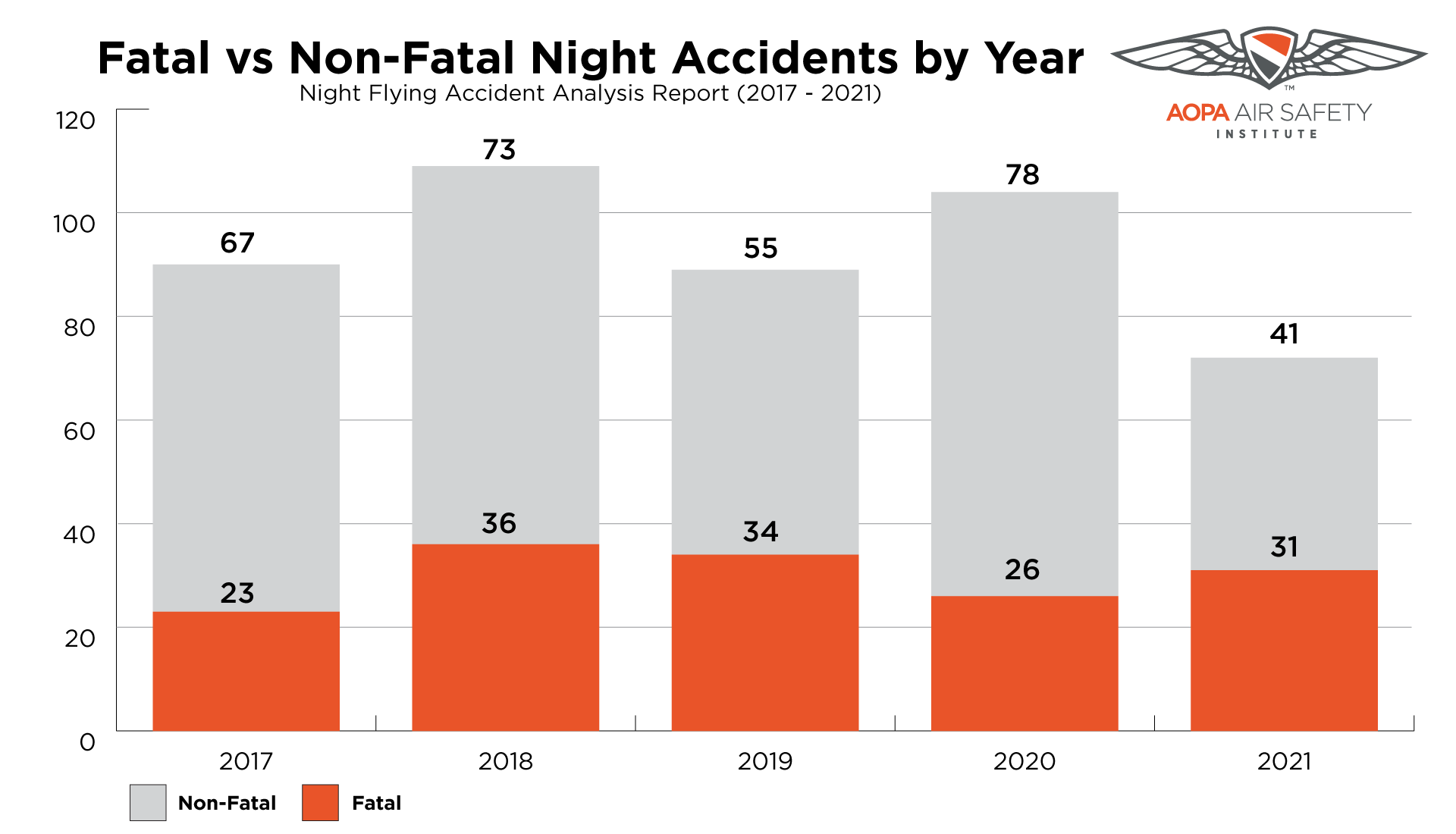EXECUTIVE SUMMARY

Spatial disorientation plays a major role in night aviation accidents. Low-light conditions and visual illusions add additional risk factors not seen during daylight operations.
This report covers night flying accidents over a five-year period, from 2017 through 2021. Night for our purposes begins at dusk and ends just before dawn.
The analysis reveals four defining accident causes that make up the majority of all night-flying accidents. Loss of control in flight leads all night-time accident causes, followed by engine and propeller failure, fuel-related, and loss of control on the ground accidents (LOC-G).
During the five-year period there were 464 fixed-wing general aviation (GA) accidents. The majority (314) were non-fatal, with 150 ending in a fatality. Night accidents account for only 7 percent of all GA accidents. However, fatal night accidents account for 16 percent of fatal GA accidents. This peak in fatal accidents highlights the risks associated with night operations.
The cause for this increase in risk is multi-faceted:
- A less distinct horizon coupled with fewer clear landmarks creates orientation issues for pilots. Add in emergencies without easily visible warning signs (e.g., smoke) and we have another unique night issue.
- Night accidents with higher-than-average lethality rates represent an area where increased effort to educate pilots on the dangers and risks would reduce the number of occurrences. Particularly dangerous and highly lethal are LOC-I accidents. Training that emphasizes low-speed awareness and stall recognition and prevention should reduce these deadly accidents.
- Personal flights dominated fatal and non-fatal accidents. To improve proficiency among pilots flying at night, the AOPA Air Safety Institute (ASI) encourages pilots to routinely seek instruction during night flights with an emphasis on en route, climb, and approach phases to help reduce accidents.
- Spatial disorientation plays a major role in night aviation accidents. Low-light conditions and visual illusions add additional risk factors not seen during daylight operations.

Early Analysis: Black Hole Departure in Venice, Florida
On April 5, 2023, a Piper PA–32R-300 Cherokee Lance descended into the Gulf of Mexico at night during the initial climb after takeoff from Runway 23 at Venice Municipal Airport in Venice, Florida. Sadly, all four people on board the airplane perished in the accident. ASI makes a preliminary assessment of the accident, addressing notable portions of the tragic flight and highlighting areas the NTSB will likely investigate to determine a probable cause.